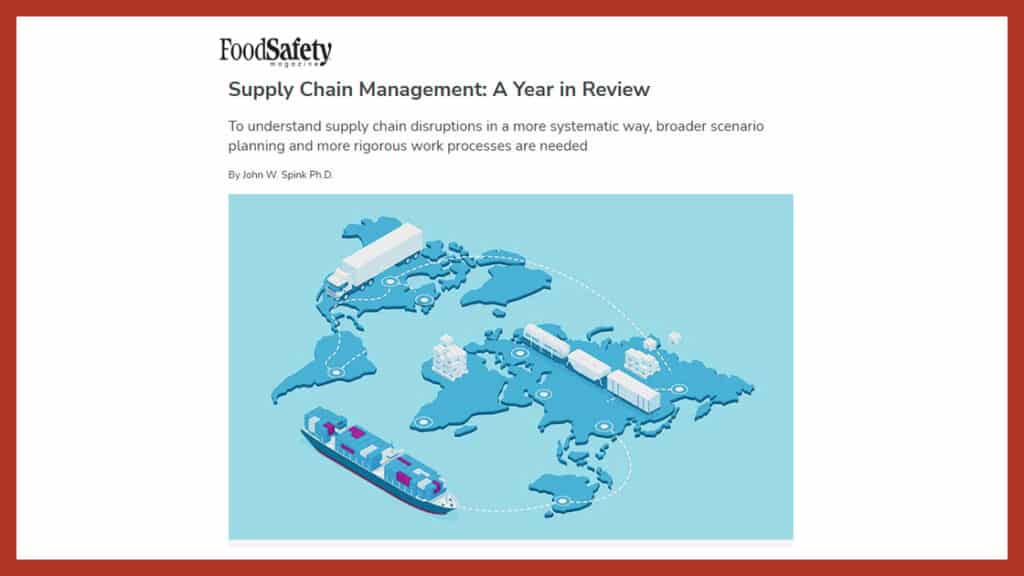My new article in Food Safety Magazine expands on my 2022 Food Safety Summit presentation on ‘Food Safety as a Supply Chain Management Problem’ (see the blog post and video lecture). Beyond just a summary of the past years, this drills into lessons learned and best practice recommendations.
- https://www.food-safety.com/articles/8041-supply-chain-management-a-year-in-review
- https://www.food-safety.com/authors/139-john-spink
The article can be quickly summarized as: “The crux of the last year of supply chain management is that our problems have shifted from ‘known knowns’ to ‘unknowables.’” What I mean by this is that previously we could expect similar types of supply chain disruptions. Now, between the lingering COVID impact, the Ukraine-Russia repercussions, plus other stressors, we’re seeing many completely new and unexpected types of problems.
Excerpt from Food Safety Magazine article:
The Challenge for Supply Chain Management
What has fundamentally changed is that our old way of responding is no longer possible. Basically, all the usual buffers were—or are still—gone, such as having safety stock, using backup suppliers, being able to expedite a few shipments to get caught up, being able to scale up from optimal utilization to maximum, or the option to increase lead times on deliveries. Think about these assumptions that are shattered:
- No automatic assurance of supply
- No automatic alternate shipping route
- No more “operating out of inventory”
- No more “just expediting shipments”
- Consumer delivery has shifted from days to hours
- No equilibrium, no patterns, no “normal”
- The multiplication of all the assumptions
Know Your Problem Type to Frame Your Response
If you do not understand the type of question you are answering, you may use the wrong tool. For example, detecting species swapping is very different than preventing country-of-origin labeling fraud. Known known? Known unknown? Unknown unknown? The classification makes a difference. So often, we—as humans, consumers, food scientists, criminal investigators, etc.—apply the same tool when responding to every problem.
Types of problems include:
- Simple (known known—e.g., water on the floor)
- Complicated (known unknowns—e.g., hurricane season)
- Complex (unknown unknowns—e.g., most food fraud events)
- Chaotic (unknowables—e.g., Ukraine–Russia)
Takeaway Points:
- Supply chain management concepts can be applied to food safety management
- Current food safety and food fraud risk assessment methods can be adapted to fit into supply chain management and corporate risk assessments
- For an efficient discussion of risks—specifically, a new risk explained in relation to all other enterprise-wide risks—the assessment should be calibrated with the overall, company-wide financial risks
Action items include:
- Identify the team or accountable person (Is that you? Your supervisor?)
- Review your current documentation, methodologies, and procedures
- Review your audits and food safety management system (FSMS) standards to understand the scope and application of hazard identification
- Conduct a gap analysis of your food safety management and food fraud prevention to identify where early warning and proactive responses to disruptions could be improved
- Re-educate yourself and others before you start creating or implementing plans (For example, see the Food Fraud Prevention MOOCs at www.FoodFraudMOOC.com)
- And then, propose, get approval, and implement a management system
So, see the full article for more details and expanded discussions:

